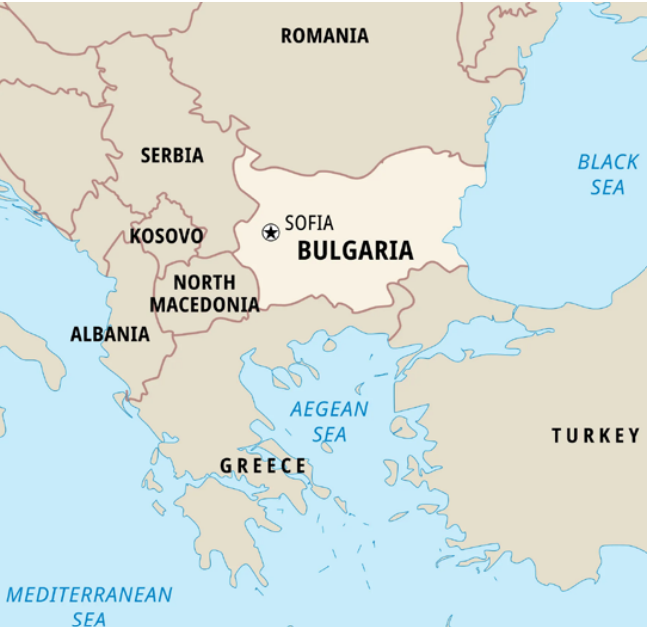World Happiness Report (WHR) 2024
- WHR 2024 released by UN Sustainable Development Solutions Network (UNSDSN).
- About WHR
- Evaluates levels of happiness by 6 key variables: Healthy life expectancy, GDP per capita, Social support, Low corruption, Generosity, and Freedom.
- Scores are based on individuals’ own assessments of their lives.
- Key highlights of WHR 2024
- India has been ranked 126 out of 143 countries.
- Top 3 countries are Finland, Denmark, and Iceland, respectively.
- Large gap of 6 points (on a scale of 10) between top (Finland) and bottom (Afghanistan) countries.
- Tags :
- World Happiness Report
- UNSDSN
Infrastructure Investment Trust (InvIT)
- National Highways Infra Trust (NHIT) completed largest InvIT monetization for National Highway stretches.
- NHIT is an InvIT by National Highways Authority of India (NHAI).
- About InvIT
- It is a Collective Investment Scheme similar to a mutual fund.
- Enables direct investment from individual and institutional investors in infrastructure projects to earn a small portion of income as return.
- Regulated by SEBI (Infrastructure Investment Trusts) Regulations, 2014.
- Has a specific structure formed by four important components— trustee, sponsor, investment manager, and project manager.
- Tags :
- InvIT
- Investment Scheme
Negative Interest Rates (NIR)
- Bank of Japan ends negative interest rates, which was introduced in Japan in 2016.
- About NIR
- It is an unconventional monetary policy tool where central banks set target interest rates less than zero percent.
- Aims to address deflationary pressure and recession in the economy by incentivizing consumers and businesses to spend or invest money, rather than leave it in their bank accounts.
- Other unconventional monetary policy instruments: Extended lending or Term-Funding Operations, Asset Purchase Programmes, etc.
- Tags :
- Negative Interest Rates
- Monetary Policy Tools
Inter-State Coordination for wildlife conservation
- The forest departments of Kerala, Karnataka, and Tamil Nadu forged an interstate agreement to safeguard forest communities as well as animals under Schedule I of Wildlife Protection Act involved in conflict, and conserve ecosystems.
- It specifies action plan for conservation and mitigating conflict situations, foster collaboration in intelligence sharing, exchange resources etc.
- It resolved to conduct synchronised population estimation in protected areas.
- An advisory board of wildlife conservation experts will be constituted to provide insights to enhance conflict mitigation strategies.
- It also called for Standard Operating Procedure (SOP) for managing human-animal conflict.
- Tags :
- Wildlife Conservation (WC)
- Inter- State Coordination for WC
- Wildlife Protection Act
Peatlands
- A new study finds that drainage canals for peatlands are a major source of carbon emissions.
- About Peatlands
- Peatlands are terrestrial wetland ecosystems with waterlogged conditions which slow down the decay process which prevents plant material from fully decomposing.
- Generally, found in permafrost regions towards poles and at high altitudes, in coastal areas, beneath tropical rainforest and in boreal forests.
- These are some of the largest stores of carbon in the world.
- Tags :
- Peatlands
Seaweed
- Indonesia is pioneering large-scale cultivation projects in East Lombok, with support and collaboration from India.
- About Seaweed
- It is a common name for species of marine plants and algae that grow in the ocean as well as in rivers, lakes, and other water bodies.
- Most are medium-sized and come in colours of red, green, brown, and black.
- Properties: Low in calories due to its high content of fibre and water, but rich in minerals absorbed from seawater, and not a major source of protein.
- Potential Benefits: Weight control, prebiotic food source for beneficial gut bacteria, antioxidant, etc.
- Tags :
- Seaweed
- Seaweed Benefits
Asbestos
- USA’s Environmental Protection Agency banned all forms of deadly carcinogen asbestos.
- Asbestos is a group of naturally occurring fibrous minerals having extraordinary tensile strength, poor heat conduction and resistance to chemical.
- Main forms of asbestos are chrysotile (white asbestos) and crocidolite (blue asbestos).
- Applications: Building materials, insulation, automobile parts etc.
- Health impact: All types of asbestos are carcinogenic, causing lung cancer, mesothelioma, cancer of larynx and ovary, and asbestosis (fibrosis of the lungs).
- India has not banned use of any type of asbestos.
- Tags :
- Asbestos
- Forms of asbestos
Red Mud
- Researchers from IIT Madras developed a method for treating bauxite residue (known as Red Mud) using phosphoric acid to extract valuable materials from it.
- Some such materials such as ceramic have dielectric and optical properties, with potential applications in electronic components and energy storage.
- Red Mud is a byproduct of aluminium production.
- It contains toxic heavy metals such as arsenic, lead, cadmium, chromium, vanadium and mercury.
- Its high alkalinity makes it extremely corrosive and damaging to soil and life forms.
- Tags :
- Red Mud
- Bayer process
Place in News
Bulgaria (Capital: Sofia)
- Recently, the Indian navy rescued hijacked Bulgarian ship “Ruen” and its crew.
- Political features
- Located in Balkan Peninsula of Southeastern Europe and a member of European Union.
- Bordering Countries: Turkey and Greece (South), North Macedonia and Serbia (West), Romania (North).
- Surrounding water body: Black Sea.
- Geographical features
- Major Rivers: Danube, Maritsa, Struma, Iskar
- Mountain Ranges: Balkan Mountains, Rila, Pirin, Rhodopes
- Highest Point: Mount Musala.

- Tags :
- Bulgaria
- Sofia




